Respiratory neuron characterization reveals intrinsic bursting properties in isolated adult turtle brainstems (Trachemys scripta)
- PMID: 25462012
- PMCID: PMC4430450
- DOI: 10.1016/j.resp.2014.11.004
Respiratory neuron characterization reveals intrinsic bursting properties in isolated adult turtle brainstems (Trachemys scripta)
Abstract
It is not known whether respiratory neurons with intrinsic bursting properties exist within ectothermic vertebrate respiratory control systems. Thus, isolated adult turtle brainstems spontaneously producing respiratory motor output were used to identify and classify respiratory neurons based on their firing pattern relative to hypoglossal (XII) nerve activity. Most respiratory neurons (183/212) had peak activity during the expiratory phase, while inspiratory, post-inspiratory, and novel pre-expiratory neurons were less common. During synaptic blockade conditions, ∼10% of respiratory neurons fired bursts of action potentials, with post-inspiratory cells (6/9) having the highest percentage of intrinsic burst properties. Most intrinsically bursting respiratory neurons were clustered at the level of the vagus (X) nerve root. Synaptic inhibition blockade caused seizure-like activity throughout the turtle brainstem, which shows that the turtle respiratory control system is not transformed into a network driven by intrinsically bursting respiratory neurons. We hypothesize that intrinsically bursting respiratory neurons are evolutionarily conserved and represent a potential rhythmogenic mechanism contributing to respiration in adult turtles.
Keywords: Chelonian; Pacemaker; Reptile; Rhythm generation.
Copyright © 2014 Elsevier B.V. All rights reserved.
Figures
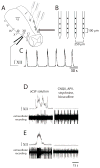
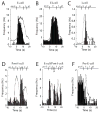
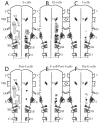
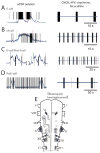
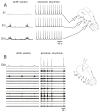
Similar articles
-
Isolated adult turtle brainstems exhibit central hypoxic chemosensitivity.Comp Biochem Physiol A Mol Integr Physiol. 2018 Nov;225:65-73. doi: 10.1016/j.cbpa.2018.07.001. Epub 2018 Jul 9. Comp Biochem Physiol A Mol Integr Physiol. 2018. PMID: 30003967 Free PMC article.
-
Methylxanthines do not affect rhythmogenic preBötC inspiratory network activity but impair bursting of preBötC-driven motoneurons.Neuroscience. 2013;255:158-76. doi: 10.1016/j.neuroscience.2013.09.058. Epub 2013 Oct 10. Neuroscience. 2013. PMID: 24120555
-
Cycle-by-cycle assembly of respiratory network activity is dynamic and stochastic.J Neurophysiol. 2013 Jan;109(2):296-305. doi: 10.1152/jn.00830.2011. Epub 2012 Sep 19. J Neurophysiol. 2013. PMID: 22993257 Free PMC article.
-
Cellular mechanisms underlying modulation of breathing pattern in mammals.Ann N Y Acad Sci. 1989;563:114-30. doi: 10.1111/j.1749-6632.1989.tb42194.x. Ann N Y Acad Sci. 1989. PMID: 2476055 Review.
-
Facing the challenge of mammalian neural microcircuits: taking a few breaths may help.J Physiol. 2015 Jan 1;593(1):3-23. doi: 10.1113/jphysiol.2014.277632. J Physiol. 2015. PMID: 25556783 Free PMC article. Review.
Cited by
-
Interdependence of cellular and network properties in respiratory rhythmogenesis.bioRxiv [Preprint]. 2023 Nov 2:2023.10.30.564834. doi: 10.1101/2023.10.30.564834. bioRxiv. 2023. Update in: Proc Natl Acad Sci U S A. 2024 May 7;121(19):e2318757121. doi: 10.1073/pnas.2318757121. PMID: 37961254 Free PMC article. Updated. Preprint.
-
Microcircuits in respiratory rhythm generation: commonalities with other rhythm generating networks and evolutionary perspectives.Curr Opin Neurobiol. 2016 Dec;41:53-61. doi: 10.1016/j.conb.2016.08.003. Epub 2016 Aug 30. Curr Opin Neurobiol. 2016. PMID: 27589601 Free PMC article. Review.
-
Development of central respiratory control in anurans: The role of neurochemicals in the emergence of air-breathing and the hypoxic response.Respir Physiol Neurobiol. 2019 Dec;270:103266. doi: 10.1016/j.resp.2019.103266. Epub 2019 Aug 10. Respir Physiol Neurobiol. 2019. PMID: 31408738 Free PMC article. Review.
-
Vertebrate Evolution Conserves Hindbrain Circuits despite Diverse Feeding and Breathing Modes.eNeuro. 2021 Apr 28;8(2):ENEURO.0435-20.2021. doi: 10.1523/ENEURO.0435-20.2021. Print 2021 Mar-Apr. eNeuro. 2021. PMID: 33707205 Free PMC article. Review.
References
-
- Adamos DA, Kosmidis EK, Theophilidis G. Performance evaluation of PCA-based spike sorting algorithms. Comput Methods Programs Biomed. 2008;91:232–244. - PubMed
-
- Bongianni F, Mutolo D, Cinelli E, Pantaleo T. Neural mechanisms underlying respiratory rhythm generation in the lamprey. Respir Physiol Neurobiol. 2014 Epub ahead of print. - PubMed
-
- Bongianni F, Mutolo D, Nardone F, Pantaleo T. GABAergic and glycinergic inhibitory mechanisms in the lamprey respiratory control. Brain Res. 2006;1090:134–145. - PubMed
-
- Broch L, Morales RD, Sandoval AV, Hedrick MS. Regulation of the respiratory central pattern generator by chloride-dependent inhibition during development in the bullfrog (Rana catesbeiana) J Exp Biol. 2002;205:1161–1169. - PubMed
Publication types
MeSH terms
Grants and funding
LinkOut - more resources
Full Text Sources
Other Literature Sources

